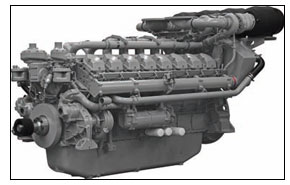
The question of power
generation is a well
documented topic on the Indian
continent. According to the trade
organisation, IndiaCore, though the
availability of power has increased,
demand has consistently outstripped
supply and substantial energy and
peak shortages of 7.1 per cent and
11.2 per cent prevail.
This situation is further
exacerbated by
the urban-rural
dichotomy.
Currently it is
thought that
only about 56
per cent of
households have
access to electricity,
with rural access
being 44 per cent and urban access
about 82 per cent. For those who do
have electricity, reliability and
quality are matters of concern. The
annual per capita consumption, at
about 580 kWh, is among the lowest
in the world.
When it is considered that
electricity is one of the major drivers
for targeted domestic growth of 8 to
10 per cent, the provision of
electricity in terms of total installed
capacity, secure distribution and
reliable transmission, is clearly a
priority.
India has traditionally relied on
fossil fuels to
generate
much of its
power and while
this is still the
case, more and
more investment is
being made in
alternative sources of
energy—solar, wind and
even tidal. Though these are
environmentally friendly and
sustainable resources, the projects
themselves are in their infancy. One
area that is ripe for growth is the
independent power sector where the
provision of gensets can either
alleviate the burden on the main grid
or actually provide power to areas
and communities that are off-grid.
In 2004, according to IndiaCore,
diesel powered gensets accounted for
a mere 1 per cent of total installed
generating capacity but there is every
reason to think that the figure is
higher today. Certainly from my
experience working with many
independent genset manufacturers,
the feeling is that the market for both
prime and standby power is set to
continue growing.

While each and every installation
has its own unique challenges there
are some common themes.
Reliability, cost-effectiveness and
product support are messages that
are heard on a daily basis. While
these are pretty synonymous with
most markets there are situations
that are distinct to the Indian continent.
For instance, standby power in India has a very different
connotation than in, say, a more mature market. Typically
gensets in standby mode might be running for eight or more
hours a day when brownouts occur, which is a much longer
period than normally associated with that mode of operation.
Therefore, from a technological point of view the engine,
which is the beating heart of any genset, has to overcome the
challenges posed by its application, its location, its
installation and its ongoing maintenance.
Clearly, reliability is a key requirement and that is why
mechanical engines are predominant. These engines offer
simplicity yet are extremely robust, capable of withstanding
the challenging environment and conditions often imposed on
them. However, that is not to say that they are not
technologically advanced.
One area where the industry will have no choice but to
comply is that of emissions legislation. As it stands India is
anticipated to lead the world when it comes to imposing
regulations for stationary power applications. In July 2013
the legislation will mandate that all gensets under 800kW will
need to achieve EU3A equivalent emissions levels while
gensets above that threshold will most likely need to achieve
EPA Tier-2 equivalent emissions levels.
While some may view this as yet another hurdle, we at
Perkins treat it as an opportunity to improve on what we
already have. It will inevitably take some work around the
combustion and fuel injection processes to arrive at the
solution but we believe we will have the appropriate
technologies in place when the time comes.
The important thing here is that electricity will be able to be
produced more cleanly and with less impact on the
environment.
To conclude then, it is worth reiterating that the independent
power sector has an important role to play in helping to meet
the country's energy needs. There are situations where it can
complement the grid and situations where it can take its place.
Above all it can help raise the per capita consumption of
electricity to a level that improves the quality of life for many
whose electricity supply is either compromised or nonexistent.
(Richard Cotterell is CMD, Perkins India Pvt Ltd. Perkins,
a group company of US-based Caterpillar Inc, is one of the
world's leading suppliers of off-highway diesel and gas
engines in the 4 - 2,000 kW (5 - 2,800 hp) market.)